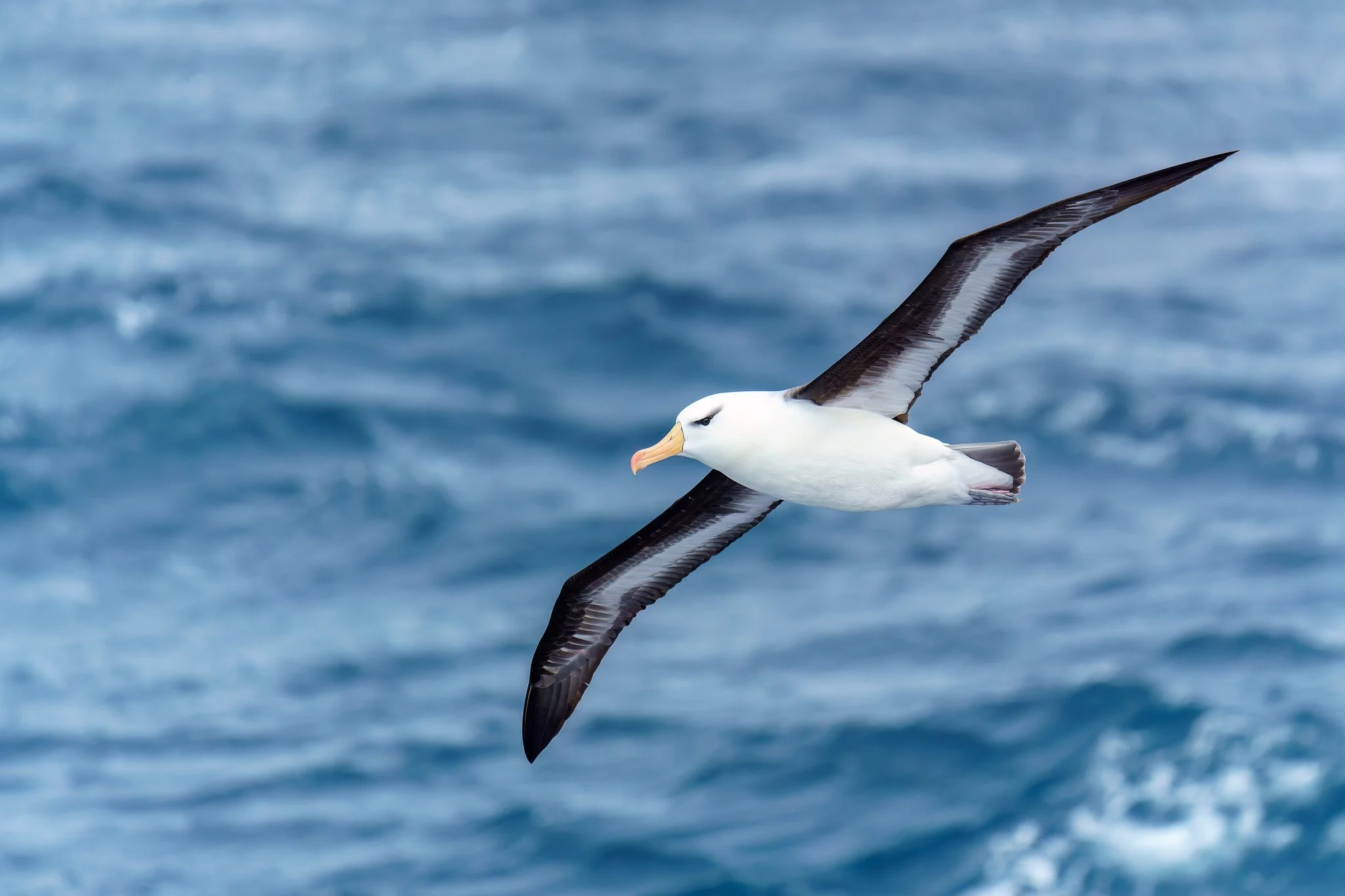Photographing Birds in Flight
Grey-headed albatross, Southern Ocean
I’ve just wrapped up six weeks in Antarctica, which gave me plenty of opportunities to practice my bird photography – hundreds of albatross, and eleventy billion penguins.
The former, at least, allowed me to play around with my settings for birds in flight photography with my new (to me) Sony A7R IV camera.
I’ll write up some notes quickly for now, and fill them out over time…
Southern giant petrel, South Georgia
Basic Settings
I was shooting exclusively in Manual mode with Auto ISO:
Shutter speed: 1/4000 sec
Aperture: f/6.3
Auto ISO (100 –12,800)
Metering Mode: Multi. I often use a little negative exposure compensation when shooting white birds against dark water.
These settings should be fairly gear agnostic, but I was mostly shooting with the A7R IV and the Sony 100–400 GM or 200–600 G lenses.
Striated caracara, Falkland Islands
Autofocus Settings
Tracking: Zone worked well, mostly – it did a good job of finding then following birds.
AF Tracking Sens. is set to 1 (Locked On).
Black-browed albatross, Southern Ocean
Tips & Tricks
I programmed in the above settings to my Focus Hold Button (on the lens) using the Recall Custom hold feature. That way, if a bird flew past while I was doing something else, I could panic-jam my thumb on the lens button to instantly override my settings with the above. Super useful.
I blast away at the A7R IV’s max frame rate – Drive Mode, Continuous Shooting: Hi+. I use Compressed RAW files as they’re fine for my purposes, and give me a lot more buffer to work with.
More to come. This is a big topic! Feel free to drop any questions in below…
Simon.




